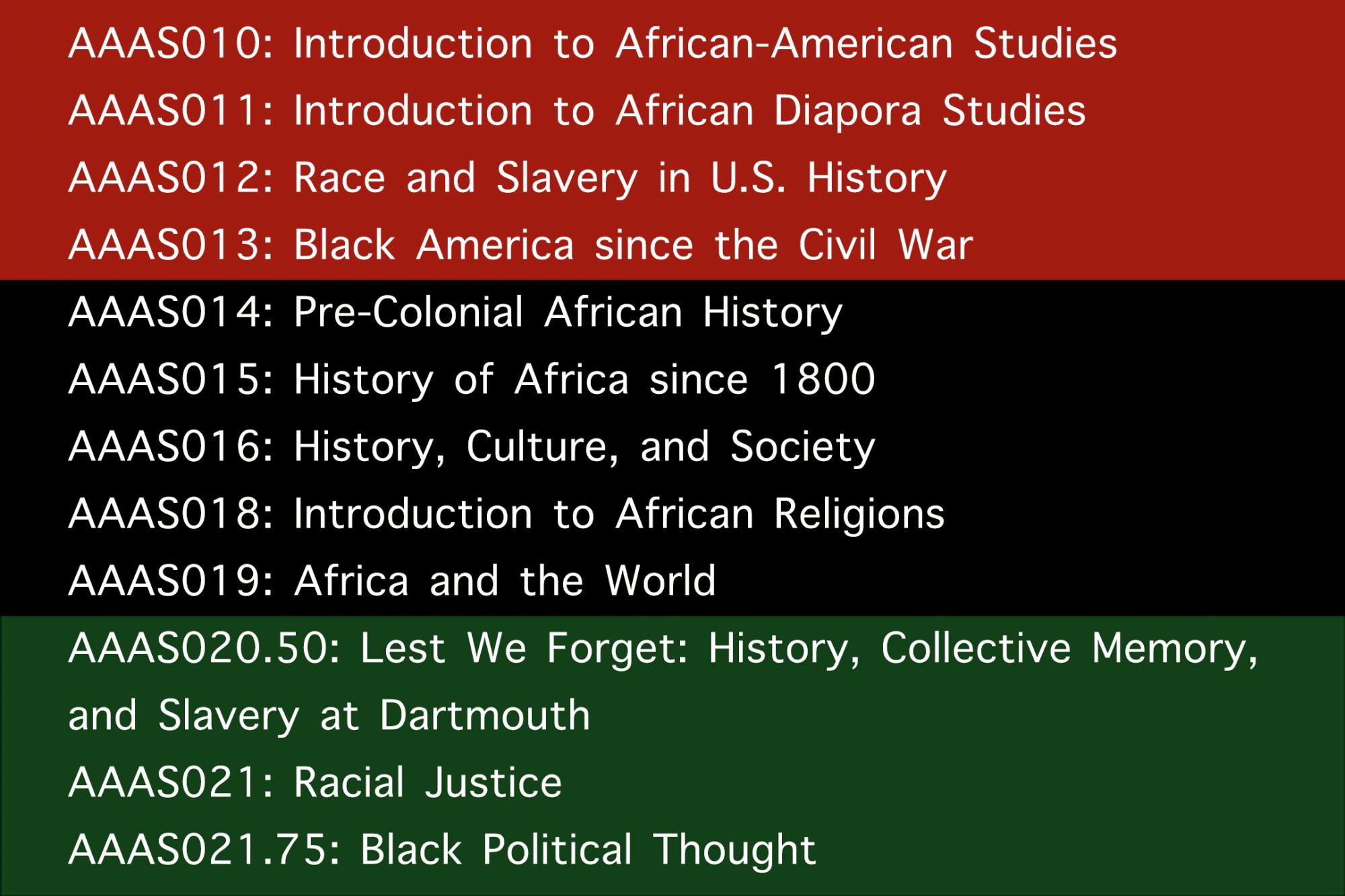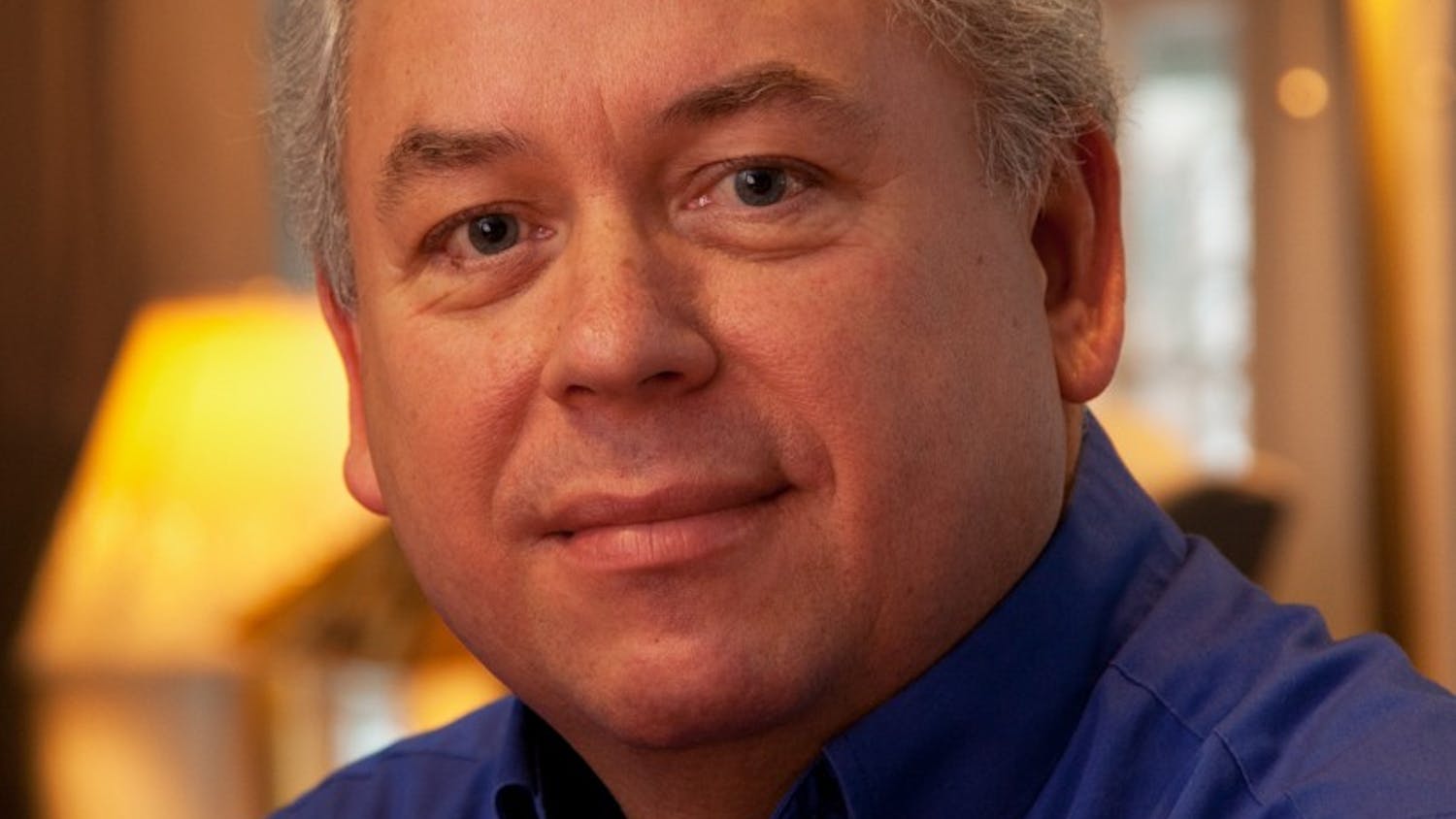Gab Smith ’22 took AAAS 11, “Introduction to African Studies” last fall as a prerequisite for the African and African American Studies minor. Before enrolling in the class, a friend told her it would be relatively easy; this came as a relief to Smith, who was looking for a less intensive class to balance out a time-consuming lab commitment.
Introductory courses are often less rigorous than their upper level counterparts. This holds true across departments — for example, the median grade for AAAS 11 last fall was an A, but so was the median grade for ENGS 4, “Technology of Cyberspace,” an introductory engineering class. And the AAAS department doesn’t stand out when it comes to grades — according to the “Registrar’s Report on Grades 2017-2018,” an internal document obtained by The Dartmouth last year, the average assigned grade in AAAS classes in the 2017-2018 academic year was 3.51, nearly identical to the average assigned GPA that year of 3.5.
Comparing grades obviously does not tell the whole story, but it does suggest similar levels of rigor. However, students are quick to associate engineering classes like ENGS 4 with a strenuous workload.
Conversely, as Smith has observed, many Dartmouth students see AAAS courses as “layups,” whether they are introductory courses or upper level courses, when they are in reality quite rigorous. Smith’s observations suggest that students have a narrow definition of difficult classes; in the collective mind of many, rigor seems to solely conjure images of students holed away in chemistry labs or up all night writing code.
Smith’s frustration is rooted in experiences in her AAAS 10, “Introduction to African Studies” and AAAS 11 courses — both prerequisites for the AAAS minor — where she noticed students seemed disengaged.
“You see the professor’s really excited and trying to get people engaged in the class and nobody’s talking, and he’s like, ‘Did anybody actually do the reading? Did anybody have any opinions on it?’ And no one talks,” Smith said. “You can kind of see that people aren’t really engaging with the material.”
While the intention of making introductory courses less rigorous than upper level courses across departments may be to attract students to those departments and hopefully engage them, in Smith’s opinion, that has not been students’ response to introductory level AAAS courses.
“I kind of took … [AAAS 11] because it’s not as hard as the upper level classes, but it’s still something that’s important, [something that] people should pay attention to. I think that most people kind of take it as their cultural non-Western distrib or an Art distrib or something like that,” Smith said, referring to Dartmouth’s distributive requirements. She acknowledged that it is certainly possible for students to take a class both because it is less difficult than their other classes that term and because they are interested in it, but found it rare in her introductory level AAAS courses that students actually displayed both motivations.
Smith said that attitudes toward African Studies were something her Introduction to African Studies course actually discussed.
“In the sixties, that’s when they started taking it seriously,” Smith said. “Because before that, they only studied African and African American studies because the countries in Africa were becoming traders on the world stage.”
“The study of African history and culture was always woven into the curriculum at historically Black colleges and universities,” explained history professor Matthew Delmont. “At institutions that we would now call predominately white institutions, the first Black studies programs start in the late 1960s.”
San Francisco State University established the first Black studies department at a predominantly white institution in 1968. The establishment of the department was the result of the longest student strike in history, which was started by the Black Student Union but later co-organized by the Third World Liberation Front, a coalition that included Asian-American, Latin American and Native American students who were also fighting for institutional equity and the establishment of ethnic studies departments.
The effects of the strike were not limited to San Francisco State University — in the next three to four years, the Black organizers’ efforts had rapidly reached schools across the country — including Dartmouth, which started its program in AAAS in 1969.
“You [start to] see … African American studies, Black studies in some form — either as a department or program or campus cultural initiative in some form — at over 500 universities by the 1970s,” Delmont said.
However, one thing that has not changed is AAAS’s designation as a program rather than a department at Dartmouth. The College has a number of interdisciplinary programs, which are distinct from departments in their more limited ability to hire tenure track faculty members and receive institutional funding. These programs include other cultural studies, such as Native American Studies; Latin American, Latino and Caribbean Studies and Women’s, Gender and Sexuality Studies. Also included under the banner of interdisciplinary programs are a number of STEM-adjacent disciplines, such as Cognitive Science, Environmental Studies and Quantitative Social Science.
“AAAS has, I think, four tenure line faculty [and] a number of affiliate faculty, all very talented scholars who are doing really excellent, pathbreaking work, but it remains a program as opposed to a department,” Delmont said. “It doesn’t have the kind of institutional support that comes with faculty lines and institutional funding that it would take to make it a core part of the College.”
Delmont added that, while no conclusion has been reached, a potential shift from program to departmental status is something AAAS faculty are considering. He also added that other ethnic studies programs at Dartmouth, such as Native American Studies and Latin American, Latino and Caribbean Studies, are considering pursuing departmental status.
“A lot of that has to do with their ability to deliver their curriculum on their own, which has to do with the number of faculty they have,” Delmont explained.
There is precedent for such a shift. In 2018, Columbia University faculty voted unanimously to convert their Institute for Research in African American Studies to the African American and African Diaspora Studies department, a shift student and faculty activists had been pursuing for decades.
Chair of Columbia’s African American and African Diaspora Studies department Farah Jasmine Griffin said she found that putting institutional weight behind the department led students to take their work more seriously.
“I do think that some students tend to — not all students, but many students — respond to the dictates of the institution,” Griffin said. “And if it looks like the institution actually values something enough to departmentalize it, to put resources behind it, then that’s something that students will also value and see as very valuable."
Griffin said that before receiving departmental status in 2018, there was a small core group of African American and African Diaspora studies students at Columbia. Likewise, the current number of students at Dartmouth majoring in African and African American Studies at Dartmouth is relatively small. In 2019, the most recent year with available data, there were four AAAS majors at Dartmouth, down from five in 2018.
At Columbia, another part of what made the department more visible on campus than it had been as an institute was its newfound ability to hire a dedicated faculty.
“[Departments] can post for jobs for people who teach in their department rather than have someone who has to meet the needs of another department,” Griffin said. “Department chairs have power in the university in ways that program directors do not.”
Delmont said that hiring more dedicated AAAS faculty would help the College attract and retain Black faculty more broadly, which is a longstanding issue at Dartmouth.
“The percentage of Black faculty at Dartmouth has been right around three percent for nearly two decades, and I think the amount of resources that are allocated to a program like AAAS is directly in line with the larger climate for Black faculty on campus — that if we had more resources to have a larger, thriving AAAS unit, it would be easier to attract and retain Black faculty, which has been an ongoing challenge for the college,” Delmont said.
As Griffin saw at Columbia, when the university began taking African American and African Diaspora Studies more seriously, so did the students.
“We were sort of placed in something that was central to what Columbia is — part of Columbia’s intellectual mission,” Griffin said. And so, we certainly noticed more attendance at our programs, larger classes.”
Griffin noted that in the current moment of national reckoning around systems of racial injustice, there has been increased demand for courses in her field.
“Students want … to have a deep understanding of the moment that the nation is in,” she said. And I think they think — rightly so — that studying African American studies is one way of having a deeper understanding of that.”



